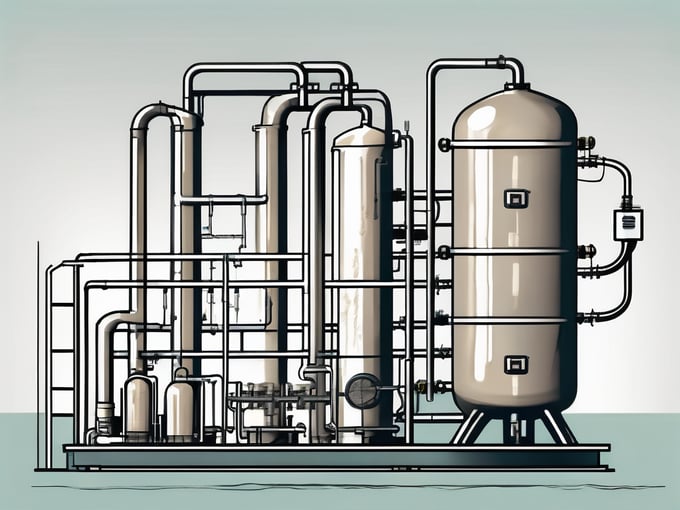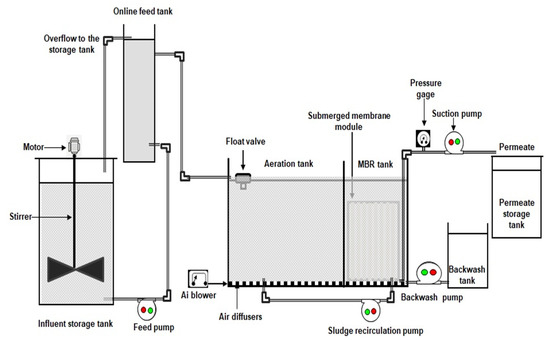How Membrane Bioreactor Can Improve the Quality of Wastewater Treatment
How Membrane Bioreactor Can Improve the Quality of Wastewater Treatment
Blog Article
Exactly How Membrane Bioreactors Are Reinventing Water Purification Solutions
The emergence of membrane layer bioreactors (MBRs) represents a considerable advancement in the field of water filtration, merging biological therapy processes with innovative membrane layer filtration modern technologies. This integration not only boosts the quality of treated effluent yet also addresses metropolitan room constraints, making MBRs especially ideal for largely populated locations. As worldwide water deficiency heightens, the duty of MBRs in helping with drinkable water reuse and lasting water monitoring ends up being significantly crucial. The effects of this modern technology extend beyond efficiency-- what possibilities and obstacles exist in advance for its prevalent execution?
Review of Membrane Layer Bioreactors
Membrane bioreactors (MBRs) represent a significant innovation in water filtration innovation, as they combine organic therapy processes with membrane purification. This combination improves the efficiency of wastewater therapy by using microorganisms to degrade natural contaminants while at the same time using semi-permeable membrane layers to separate cured water from put on hold solids and pathogens.
The MBR system normally contains an organic reactor where the microbial populace metabolizes contaminants, adhered to by a membrane filtration system that keeps biomass and permits only tidy water to go through. This dual functionality leads to greater effluent quality compared to traditional treatment techniques. MBRs can be run in both set and continuous flow settings, providing adaptability in design and application.
They also allow the healing of water for reuse, hence adding to water sustainability initiatives. In general, MBRs are at the leading edge of boosting water therapy performance and quality, showcasing the potential for innovative services in environmental administration.
Benefits of MBR Modern Technology
The assimilation of organic therapy with membrane layer purification supplies countless benefits for water filtration procedures. Among the key advantages of Membrane layer Bioreactor (MBR) modern technology is its capacity to properly get rid of both inorganic and organic pollutants, resulting in premium effluent. The membranes serve as a physical barrier, avoiding suspended solids and pathogens from travelling through, which boosts the general security and dependability of treated water.
Additionally, MBR systems call for a smaller sized footprint compared to conventional treatment methods, permitting for extra efficient space utilization. This portable style is especially beneficial in city setups where land is limited. MBRs additionally show operational flexibility, suiting varying influent qualities and circulation rates without substantial efficiency degradation.
In addition, the procedure offers boosted nutrient removal capabilities, especially for nitrogen and phosphorus, which are vital for preventing eutrophication in obtaining waters. The decreased sludge manufacturing connected with MBR technology additionally translates to decrease disposal costs, making it a cost-effective option in the future - Membrane Bioreactor. On the whole, the advantages of MBR modern technology position it as a leading option for innovative and lasting water filtration systems, dealing with both ecological and financial issues
Applications in Water Filtration
Applications of Membrane Bioreactor (MBR) innovation in water filtration are diverse and impactful, resolving various treatment requires across several markets. MBRs effectively integrate organic therapy processes with membrane purification, making them ideal for local wastewater therapy, commercial effluent management, and even drinkable water reuse campaigns.
In community settings, MBRs are increasingly employed to enhance the quality of treated wastewater, enabling compliance with strict discharge guidelines and assisting in the recycling of water for watering and non-potable usages. Their small style likewise makes them appropriate for metropolitan atmospheres where area is limited.
Industrially, MBR technology is utilized to treat procedure water and wastewater, specifically in fields such as food and drink, drugs, and textiles. By efficiently removing contaminants and suspended solids, MBRs help sectors decrease environmental impacts while recovering important resources from wastewater streams.
Moreover, MBRs are gaining grip in decentralized water treatment applications, where small-scale systems can be released in remote locations or establishing regions. This flexibility makes it possible for neighborhoods to achieve lasting water monitoring services, enhancing accessibility to tidy water while decreasing dependence on standard treatment methods.
Study and Success Stories

In an additional example, a fabric production facility in Bangladesh embraced MBR technology to resolve its wastewater challenges. The system lowered chemical oxygen demand (COD) degrees from 1,200 mg/L to less than 100 mg/L, therefore meeting regulative standards and dramatically reducing ecological impact.
The College of Cape Town's MBR setup has actually shown reliable in treating greywater for non-potable reuse on school. This task not only saves potable water however additionally serves as an academic version for sustainable methods.
Furthermore, a seafood handling plant in Norway made use of MBR technology to deal with effluents having high levels of raw material, attaining find over 90% pollutant removal. These study underscore MBR innovation's convenience and its vital function in improving water top quality throughout diverse applications.
Future of Water Treatment Solutions
As worldwide water shortage and pollution challenges heighten, ingenious water therapy solutions are becoming progressively vital to guarantee sustainable access to clean water. The future of water treatment hinges on the assimilation of innovative modern technologies that boost the efficiency and effectiveness of purification processes. Membrane bioreactors (MBRs) go to the center of this evolution, combining organic therapy with membrane layer purification to generate high-grade effluent ideal for numerous applications.

Emerging trends such as resource recuperation from wastewater, consisting of nutrients and energy, will further change therapy facilities into eco-friendly centers. Developments in nanotechnology and membrane layer products promise boosted efficiency and durability of filtration systems.

Conclusion
Their function in safe and clean water reuse and sustainable water administration highlights their value in addressing global water shortage difficulties. Proceeded study and development will even he has a good point more improve the efficiency and fostering of MBR technology, ensuring a durable future for water treatment options.
The appearance of membrane layer bioreactors (MBRs) stands for a substantial advancement in the field of water purification, merging biological treatment processes with cutting-edge membrane filtration technologies. As global water scarcity heightens, the function of MBRs in assisting in drinkable water reuse and sustainable water administration ends up being progressively vital. They likewise allow the recovery of water for reuse, thus contributing to water sustainability campaigns.As international water deficiency and contamination difficulties heighten, ingenious water treatment solutions are coming to be significantly necessary to make sure sustainable access to tidy water. Their function in potable water reuse and sustainable water monitoring highlights their value in dealing with global water deficiency difficulties.
Report this page